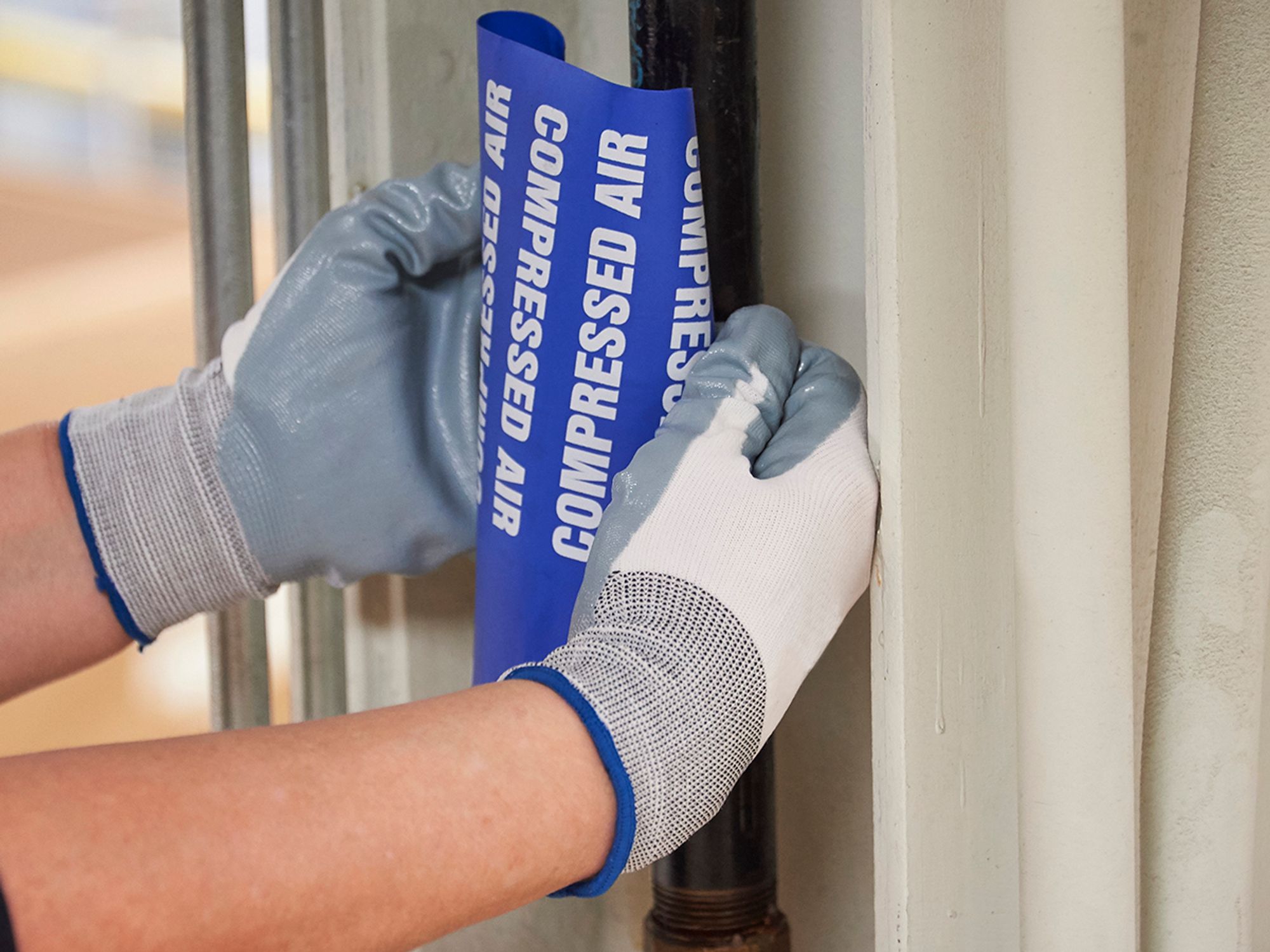Pipe markings

- Pipe markings are used to standardize the identification of pipe contents, hazards, and direction of flow.
- Some OSHA regulations apply to pipe markings, several of which reference an ANSI standard.
A pipe marking is a marking method that uses color, legends, arrows, symbols, and/or other details to identify the materials conveyed by a piping system and possibly the hazards of those materials if released. This marking method is not to be confused with signs or tags.
Purpose
Pipe markings are intended to standardize the identification of pipe contents, hazards, and direction of flow. Together, the legend, color code, arrows, and other indicators allow for quick recognition and understanding of the identity and hazards of the material conveyed by a pipe, as well as the direction of flow. When employees know the identity, hazards, and direction of the materials conveyed in a piping system, they should be better equipped to:
- Identify the correct pipe for the task;
- Turn the correct valve;
- Load material to or unload material from the correct pipe;
- Know which material is leaking from a pipe;
- Wear appropriate personal protective equipment (PPE) to handle the material; and
- Take appropriate first aid, fire, or spill response to an emergency involving the material.
Even when not required by the Occupational Safety and Health Administration (OSHA), pipe markings are recommended for active and abandoned piping in industrial, commercial, institutional, and public assembly facilities. Pipe markings are not intended for buried pipelines or electrical conduits, which may require other identification methods.
Related regulations and standards
OSHA mandates the identification of piping in:
- Processing plants where the pipes contain flammable liquids (see 29 CFR 1910.106(h)(4)(ii)(c));
- Certain welding situations (see 1910.253(d)(4)(ii));
- Pulp, paper, and paperboard mills (see 1910.261(a)(3)(ii)); and
- Textile operations (see 1910.262(c)(7)).
Section 1910.144 says that red shall be the basic color for fire protection equipment and apparatus, such as sprinkler piping. If the employer applies color to fire protection piping for identification, it must be red.
For more on safety colors, see the American National Standards Institute (ANSI) A13.1-1956, Scheme for the Identification of Piping Systems, referenced at 1910.253(d)(4)(ii), 1910.261(a)(3)(ii), and 1910.262(c)(7). Therefore, where the ANSI 1956 references apply, the employer must follow the 1956 edition of ANSI A13.1.
However, if ANSI A13.1-1956 does not apply and no state laws or regulations call for pipe marking, then the employer may wish to use pipe markings in accordance with a more modern standard — American Society of Mechanical Engineers (ASME) A13.1-2020, Scheme for the Identification of Piping Systems, which has a different color scheme than the 1956 edition.
